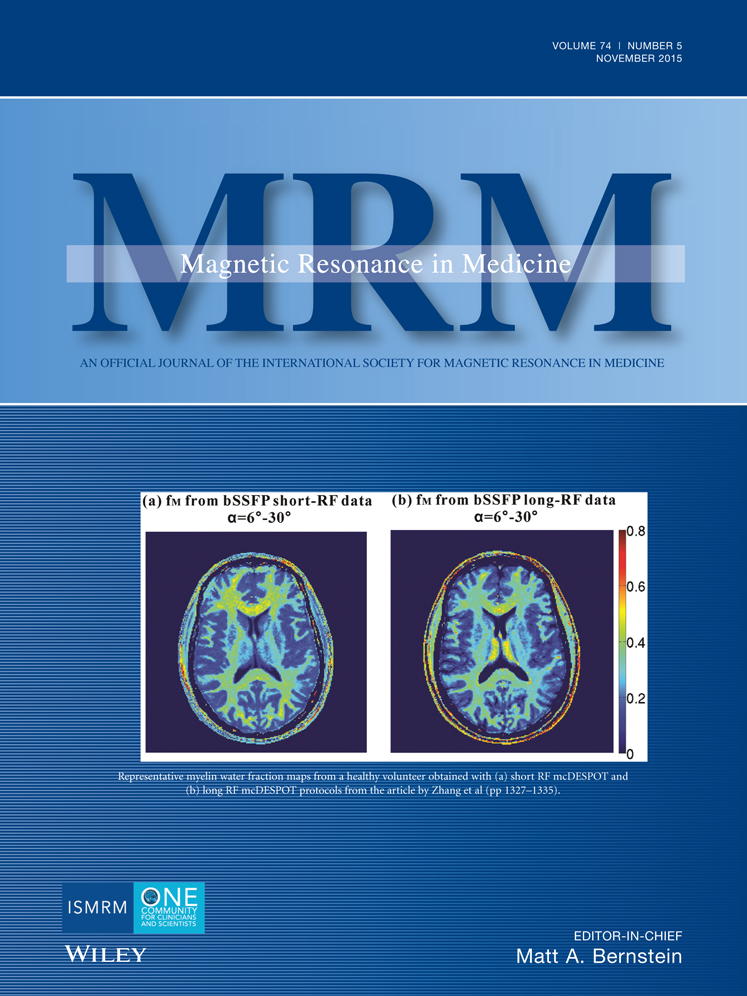Systematic analysis of the intravoxel incoherent motion threshold separating perfusion and diffusion effects: Proposal of a standardized algorithm
Abstract
Purpose
To systematically evaluate the dependence of intravoxel-incoherent-motion (IVIM) parameters on the b-value threshold separating the perfusion and diffusion compartment, and to implement and test an algorithm for the standardized computation of this threshold.
Methods
Diffusion weighted images of the upper abdomen were acquired at 3 Tesla in eleven healthy male volunteers with 10 different b-values and in two healthy male volunteers with 16 different b-values. Region-of-interest IVIM analysis was applied to the abdominal organs and skeletal muscle with a systematic increase of the b-value threshold for computing pseudodiffusion D*, perfusion fraction Fp, diffusion coefficient D, and the sum of squared residuals to the bi-exponential IVIM-fit.
Results
IVIM parameters strongly depended on the choice of the b-value threshold. The proposed algorithm successfully provided optimal b-value thresholds with the smallest residuals for all evaluated organs [s/mm2]: e.g., right liver lobe 20, spleen 20, right renal cortex 150, skeletal muscle 150. Mean D* [10−3 mm2/s], Fp [%], and D [10−3 mm2/s] values (±standard deviation) were: right liver lobe, 88.7 ± 42.5, 22.6 ± 7.4, 0.73 ± 0.12; right renal cortex: 11.5 ± 1.8, 18.3 ± 2.9, 1.68 ± 0.05; spleen: 41.9 ± 57.9, 8.2 ± 3.4, 0.69 ± 0.07; skeletal muscle: 21.7 ± 19.0; 7.4 ± 3.0; 1.36 ± 0.04.
Conclusion
IVIM parameters strongly depend upon the choice of the b-value threshold used for computation. The proposed algorithm may be used as a robust approach for IVIM analysis without organ-specific adaptation. Magn Reson Med 74:1414–1422, 2015. © 2014 Wiley Periodicals, Inc.




